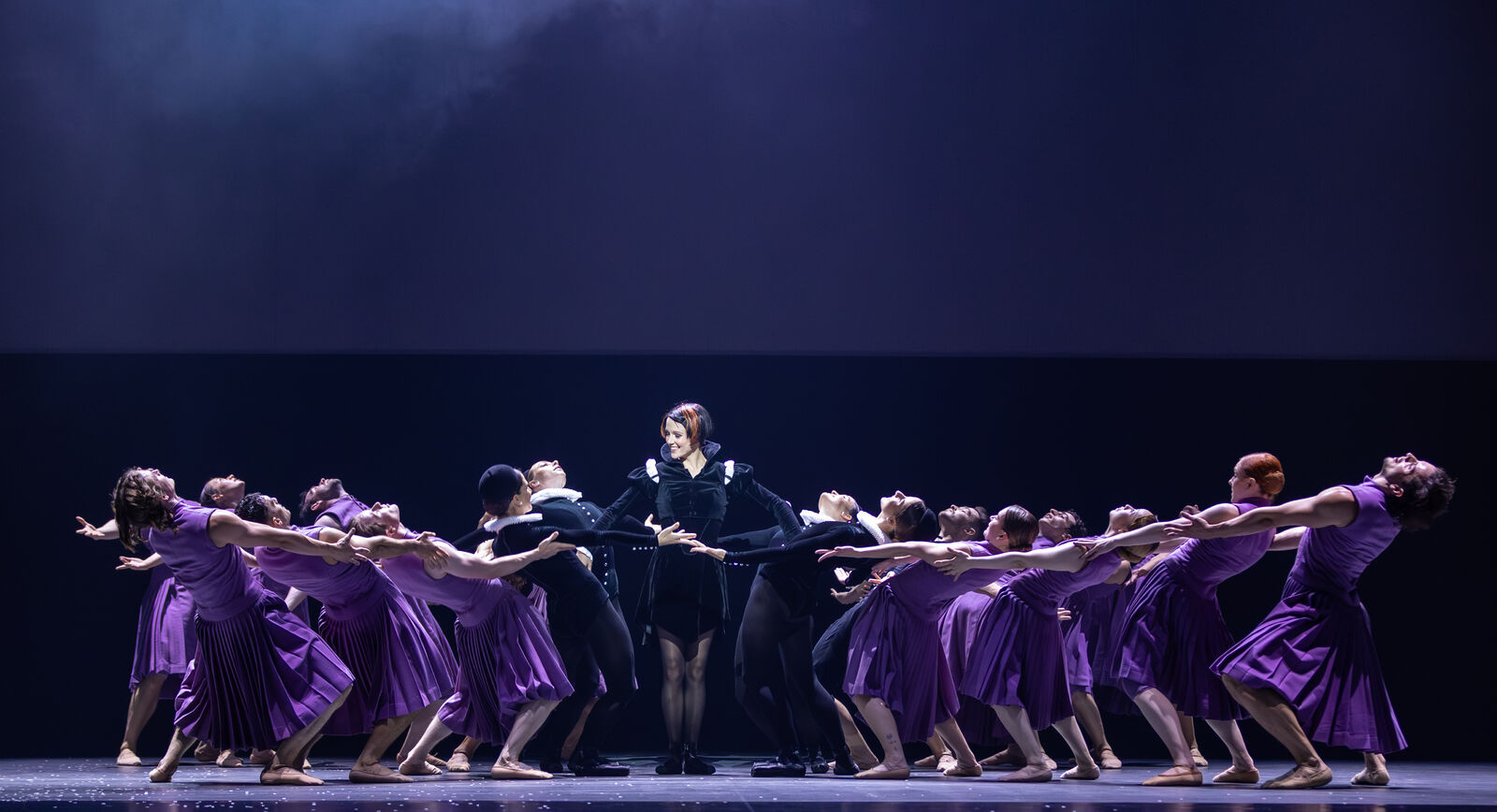The Edinburgh International Festival programme describes Scottish Ballet’s Mary, Queen of Scots as renaissance meets punk which might lead you to expect a Michael Clarke-type approach to this classic Scottish historical story, but that’s not entirely the aesthetic.
Scottish Ballet sent shockwaves out to the ballet world with their production of Coppélia and received critical acclaim. This feels almost as significant, and absolutely cements the company’s position as a powerhouse of ballet. It’s true that the classical ballet has gone a little ‘punk’ given that it opts for a contemporary approach to dance, but it’s frequently breathtaking. At no point more so, than in Act Two when a small group of ballerinas are projected up to create a monstrous insect with writhing limbs that draws a gasp from the entire audience. It’s thrilling stuff, but it’s the elegance and wit of Soutra Gilmour’s design and James Bonas‘ direction that makes this production so visually appealing.
Mary, Queen of Scots is told from the perspective of an ageing Elizabeth (played beautifully by Charlotta Öfverholm) who is recalling her bitterly childless life, throughout which she has spied on and terrorised the popular (and Catholic) Mary (a bob-haired Roseanna Leney). Her English court in white, the Scottish in black, except when they celebrate in a gorgeous swathe of heathery purple. After a slightly long first act and, judging by the interval chat, rather confusing storytelling, Act Two really carries the show’s heft.
Mikael Karlsson and Michael P. Atkinson’s breathtaking soundtrack is fully orchestrated, but brings in synth, beatbox and all manner of electronic effects with clever leitmotifs to keep us on track. One in particular, a triple thudding bass drum, is the portent of Mary’s beheading.
Death closes both acts. The first as Rizzio is dramatically hauled from the stage on a rope looking like a vanquished Christ, and at the very finale Mary steps out in a red two-piece outfit, inarguably the most striking use of colour in the entire production by some distance, that immediately signals her mortality. This simple costume choice speaks a thousand words. Similarly the use of bug heads on the corps de ballet is a witty and clear evocation of the many spying missions that Walsingham has instructed on Elizabeth’s part.
The choice to represent the younger Elizabeth with a tall male artist is bold. His flowing red locks and his significant height differential to Mary signify the power Elizabeth holds over her weaker Scottish cousin. Indeed symbolism and metaphor is what makes this production so utterly compelling and raises it up to a level that inevitably produces a roaring and deserved final ovation.


Comments